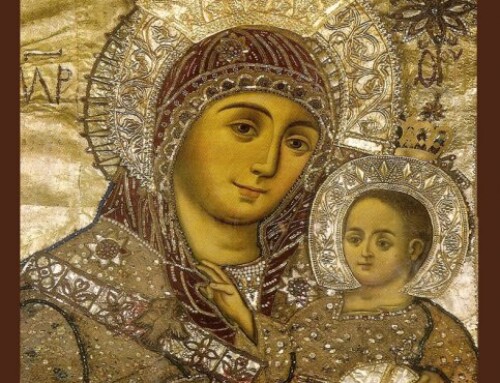Word Magazine September 1992 Page 24
MILAGRO
by John David Powell
Milagro.
For some the Spanish word conjures up images of beanfield wars. Frijoles were not on my list of things to experience during my pilgrimage to El Santuario de Chimayo where, it is said, the earth contains great medical powers.
It is believed to be a place of miracles. Milagros.
The Sanctuary of Chimayo is nestled in a small settlement down the road from the northern New Mexico town from which it gets its name. For nearly 200 years, people have journeyed to the church, many on foot over hundreds of miles of highways or mountain roads, as acts of faith and worship. Some have arrived on crutches they left behind as they walked unaided from the chapel. Triumphal shrines to personal milagros.
My wife has made several trips to Chimayo during visits to Santa Fe. Each time she returned hoping I could accompany her to the place of miracles in the Sangre de Cristo Mountains.
I strongly discouraged Sharon’s well-meaning propaganda on the grounds the real event could never equal her description. Besides, no matter how deep a faith I would like to believe I possess, I still carry enough skepticism to cloud immediate acceptance of the unexplainable. It’s an occupational hazard that goes without being around too many thieves and thugs and watching the seemingly endless parade of charlatan TV preachers and traveling salvation-show faith healers.
Sharon was anxious to return to Chimayo. She wanted to partake of its ancient spirituality and to carry to the chapel a prayer for her stepmother who, less than a week later, would undergo surgery for the removal of a lump in her breast.
I wanted to be left alone on the cloudless and unseasonably warm winter day to experience whatever it is that has been shared by pilgrims since the time of the conquistadors. I wanted to find my personal milagro, one that would allow me to leave behind the crutches that have propped up my wounded soul.
Indian legends say the santuario site was first an Indian shrine, a place where fire and smoke and hot water burst from the earth. The Tewa say that when the giant was killed at the hands of the twin war gods, fire erupted from many places and the hot, healing mud springs of Black Mesa dried up and left the miracle mud of Chimayo.
A faint scene of pinon was hidden on the breeze that encircled the adobe santuario. I stopped at the door carved in 1816 by one Pedro Dominguez, a woodcarver. I stood and considered the unknown experience that waited for me in the nave.
Nothing I have seen or heard prepared me for the primitive and impressive interior. No crystal cathedral or coliseum-sized church could match this old and hallowed spot. A friend described it as the only place in North America with the same spiritual feel as the holy Christian sites of Greece and the Middle East.
Rows of worn-down pews serve as guides past a well-mounted board covered with photographs and pieces of paper bearing the names of visitors whose prayers have been answered.
At the end of the aisle is the red-on-white painted and carved partition that separates the nave from the sanctuary Central to the sanctuary is the painted altar table adorned with floral-covered offerings.
And standing behind and above the altar is the 6-foot Crucifix of Our Lord of Esquipulas, dark green and decorated with golden leaves.
I sat on the left of the aisle for several silent minutes before I rose and followed the path that leads beneath a low door to an unexpectedly tiny chapel. Inside is the pit containing the “tierra bendita,” or blessed earth. Visitors ingest or rub the clay on parts of the body. Small amounts are collected for those unable to make the trip.
There were other people within the santuario, but I was alone. All around me were letters, cards, pictures, rosaries and other offerings left by those who preceded me. A poster board carried a poem written by a blind visitor who did not receive his sight, but left in simple words for others to read the joy he experienced during his visit to Chimayo.
1 knelt and raised a handful of dirt, not knowing if I should expect a bolt of electricity to shoot up my arm or a blinding light to blaze from the heavens accompanied by John Huston’s voice asking me why I am such a sinner.
There was no extraordinary occurrence, just continued silence and solitude, as if God was waiting for me to make the first move, to make the first show of faith.
A few minutes later, I started for the door but stopped. I wanted to leave something like the others who left various tokens to show that they walked away and were never again the same.
I looked at my hand and saw the black knotted prayer rope I had been holding since I walked through Pedro Dominguez’s door. I lightly placed it upon the small altar, a simple rope made by the hands of an unknown Orthodox monk in a Syrian monastery half a world away.
Several weeks have passed since my visit. Sharon’s stepmother went to surgery as scheduled. But the surgeon did not cut because the lump had disappeared.
And I have found a peace and strength unknown to me until a few weeks ago. Did they come from touching some ancient dirt? Did the lump disappear because of prayers at the site of blessed earth? Or was it faith that made us whole?
There is a Spanish word for it. Milagro.
John David Powell is an Orthodox Christian from Ruston, LA, where he edits a newspaper for northern Louisiana.


